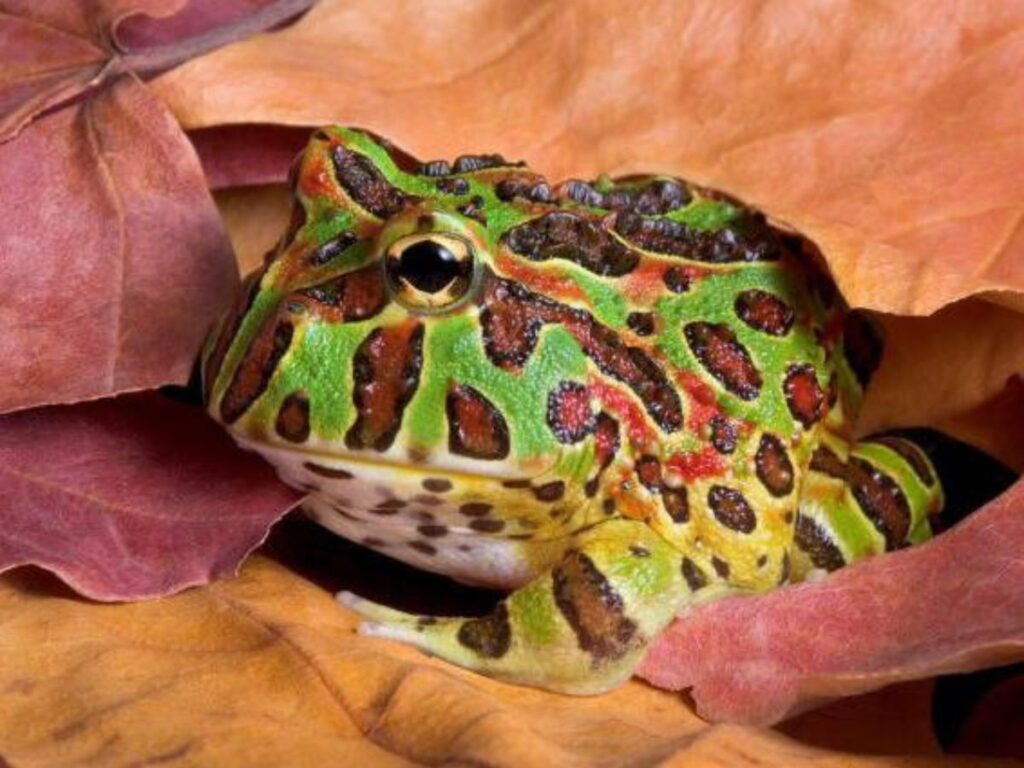🐸 Are Pacman Frogs Endangered?
Understanding the Conservation Status and Threats Facing These Amphibians
Are Pacman Frogs Endangered? - At a Glance
Most Pacman frog species are not currently endangered, but they do face growing threats from habitat loss, climate change, pollution, and the pet trade. Conservation efforts and responsible captive breeding are key to ensuring their long-term survival in the wild.
Pacman frogs, known scientifically as Ceratophrys, are beloved for their wide mouths, quirky personalities, and low-maintenance care. But as their popularity grows in captivity, questions emerge about their survival in the wild. Are Pacman frogs endangered, or are they thriving?
In this article, you’ll learn:
- Which Pacman frog species are at risk
- The current conservation status by species
- Threats to their wild populations
- The role of the pet trade and habitat destruction
- How frog keepers can help protect them
What Are Pacman Frogs?
Pacman frogs are a group of South American horned frogs from the Ceratophrys genus, including species such as:
Ceratophrys ornata (Argentine Horned Frog)
Ceratophrys cranwelli (Chacoan Horned Frog)
Ceratophrys cornuta (Amazonian Horned Frog)
Ceratophrys aurita and others
They inhabit rainforests, savannas, and tropical lowlands across Argentina, Brazil, Paraguay, and neighboring regions.
👉 Pacman Frog Habitat in the Wild: Natural Environment Explored
👉 Where Do Pacman Frogs Live in the Wild?
Conservation Status of Pacman Frogs
According to the IUCN Red List (International Union for Conservation of Nature):
| Species | IUCN Status | Notes |
|---|---|---|
| Ceratophrys ornata | Near Threatened | Declining due to habitat loss and pet trade |
| Ceratophrys cranwelli | Least Concern | Wide range, stable population |
| Ceratophrys cornuta | Least Concern | Stable but poorly studied in some regions |
| Ceratophrys aurita | Data Deficient | Not enough research to assess population health |
While most species are not critically endangered, their habitats are increasingly under threat, and some populations are declining rapidly.
Threats to Wild Pacman Frogs
1. Habitat Destruction
Deforestation and agriculture are shrinking their natural range
Wetlands are drained for farming or development
Fragmented habitats isolate frog populations
2. Climate Change
Changes in rainfall and temperature disrupt breeding cycles
Prolonged dry seasons lead to higher mortality during aestivation
3. Pollution and Pesticides
Pacman frogs absorb toxins through their skin
Contaminated water can cause illness or reproductive failure
4. Pet Trade and Overcollection
While many pet frogs are now captive-bred, wild collection still occurs
Unregulated harvesting can devastate local populations
👉 Can You Keep a Wild Pacman Frog as a Pet?
👉 Pacman Frogs and Other Pets: Can They Coexist?

How Captive Breeding Helps Conservation
Captive breeding:
Reduces pressure on wild populations
Provides frogs for the pet trade without wild collection
Preserves genetic diversity when done responsibly
Today, nearly all Pacman frogs sold as pets are captive-bred—especially popular morphs like albino, fantasy, and high-red.
The Importance of Education and Research
Conservation of Pacman frogs depends on:
Increased field studies to assess wild populations
Public awareness about ethical frog ownership
Habitat protection and restoration initiatives
Responsible breeding and care in captivity

How You Can Help
| Action | Why It Matters |
|---|---|
| Buy only captive-bred frogs | Prevents pressure on wild populations |
| Use natural, non-toxic habitat setups | Supports your frog’s health, avoids pollution |
| Support conservation organizations | Funds research and habitat restoration |
| Share education resources | Helps others care for frogs responsibly |
| Never release captive frogs into the wild | Introduces disease and disrupts ecosystems |
Final Thoughts
While most Pacman frog species are not endangered, their wild populations face serious threats. Habitat destruction, climate change, and irresponsible collecting all contribute to their vulnerability. As keepers and enthusiasts, we play a crucial role in protecting these fascinating frogs through education, advocacy, and ethical care.
🙋♀️ FAQ: Wild Pacman Frog Life
Q: Are all Pacman frogs at risk of extinction?
A: No. Some species are stable, but others are declining or lack enough data for full assessment.
Q: Is it okay to buy a Pacman frog as a pet?
A: Yes—if it is captive-bred and from a reputable source.
Q: What is the biggest threat to wild Pacman frogs?
A: Habitat loss from agriculture, deforestation, and pollution.
